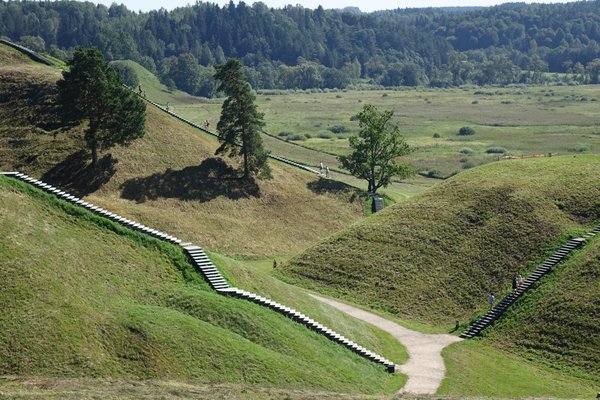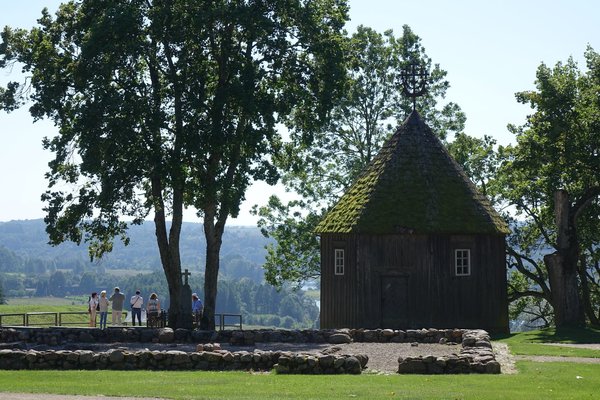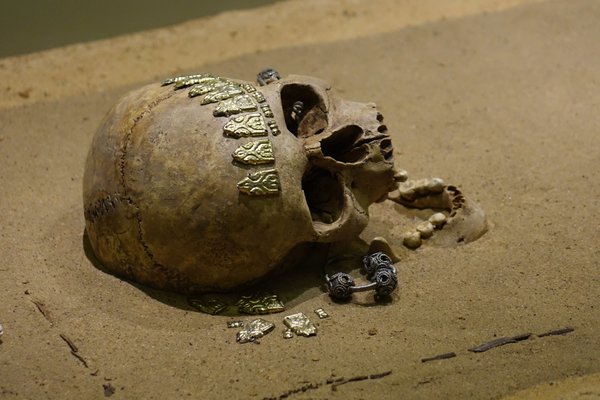Lithuania
Kernavė
Kernavė Archeological Site (Cultural Reserve of Kernavė) comprises the remains of human settlements, burial sites and five hill forts from the late Palaeolithic Period to the Middle Ages.
The findings show evidence of the pre-Christian heritage of the region (especially its funeral traditions) and the subsequent conversion to Christianity. The hill forts were a 14th-century addition and made use of the earlier mounds for the defense system.
Community Perspective: there’s an on-site museum and you can climb the unexcavated hills, but don't expect to see any grand ruins.
Site Info
Official Information
- Full Name
- Kernavė Archaeological Site (Cultural Reserve of Kernavė) (ID: 1137)
- Country
- Lithuania
- Status
-
Inscribed 2004
Site history
History of Kernavė
- 2004: Inscribed
- Inscribed
- Type
- Cultural
- Criteria
- iii
- iv
Links
- UNESCO
- whc.unesco.org
- Official
-
- kernave.org — kernave.org
- Related
-
- muziejai.lt — Link
All Links
UNESCO.org
- whc.unesco.org — whc.unesco.org/
Official Website
- kernave.org — kernave.org
Related Resources
- muziejai.lt — Link
Community Information
- Community Category
- Archaeological site: Prehistoric
- Secular structure: Military and Fortifications
- Cultural Landscape: Relict
Travel Information
Recent Connections
-
Perfect Inscriptions
2004 -
Depicted in Mizielinska Maps
See i.pinimg.com
-
No Nails
The original structures such as the woo…
Connections of Kernavė
- Trivia
-
-
Depicted in Mizielinska Maps
See i.pinimg.com
-
Dubbed as another WHS
Troy of Lithuania
-
- History
-
-
Teutonic Knights
The town was destroyed by the Teutonic Order in the late 14th century -
Feudalism
Kernavë was an important feudal town in the Middle Ages(AB ev)
-
- Ecology
-
-
Peat
the remains of the city were covered with an alluvial earth layer, that formed wet peat and preserved intact the relics
-
- Architecture
-
-
No Nails
The original structures such as the wooden chapel, as well as the replicas in the attached Open Air Museum were built without the use of nails -
Wooden architecture
wooden chapel near the church
-
- Damaged
-
-
Destroyed during invasion
Destroyed by the Teutonic Order in the late 14th century
-
- World Heritage Process
-
-
Perfect Inscriptions
2004
-
- Human Activity
-
-
Petrosomatoglyphs
"16.1.4. the stone with 'footmarks of the Christ, the Virgin Mary and the lamb', M 123;" (nom file annex)
-
- Constructions
- Timeline
-
-
Built in the 1st century
OUV: for its pre-Christian history and Hill-Forts: "From the 1st to 4th centuries CE, large settlements were scattered over several kilometres on the banks of Neris and in the Pajauta valley. Some hills were adapted to defence (Aukuro Kalnas, Mindaugo Sostas and Lizdeikos Kalnas Hill-Forts)."
-
- Science and Technology
News
No news.
Recent Visitors
Visitors of Kernavė
- AC
- Adrian Turtschi
- Alexander Barabanov
- Alexander Lehmann
- Aljaz
- Ammon Watkins
- Ana
- Argo
- Astraftis
- Atila Ege
- Bill Maurmann
- Bin
- Birgitte Sørensen
- Brendan Carroll
- butterflybird
- Carlos Sotelo
- Cezar Grozavu
- Cheryl
- Christer Sundberg
- Christoph
- Christravelblog
- Clyde
- Cody Ayers
- ctravel
- CugelVance
- cwthong
- Cyberczar
- Daniel Chazad
- Dan Pettigrew
- David Berlanda
- Dimitar Krastev
- Dolemite92
- Dorejd
- eljx1988
- Els Slots
- Erik G
- Erik Jelinek
- Eva Kisgyorgy
- Evgenii
- Federico P.
- Feldhase
- Femke Roos
- Filippo Ubaldi
- Flexiear
- Gary Arndt
- Geo.Mav
- George Gdanski
- Grzegorz Andruszkiewicz
- Harald T.
- Harry Mitsidis
- henrik_hannfors
- Hubert
- Iain Jackson
- Ian Cade
- Ivan Rucek
- Jacob Choi
- Jakob F.
- Jakubmarin
- Janina Lehmann
- Janos
- Jarek Pokrzywnicki
- Javier
- Jesse S 2010
- Jezza
- JobStopar
- Joel on the Road
- Jonas Kremer
- Jonas Martinsson
- Jon Eshuijs
- Joyce van Soest
- Juha Sjoeblom
- jxrocky
- KarenBMoore
- Karito Vies
- Kbecq
- Klaus Freisinger
- Knut
- Lara Adler
- lichia
- Loic Pedras
- Luboang
- Ludvan
- Luis Filipe Gaspar
- Maciej Gil
- Maciej Gowin
- Martina Rúčková
- Mathijs
- Max
- MaxHeAnouBen
- MH
- Michael Turtle
- Mikko
- Mikko Syrjä
- Miloš Tašković
- nan
- Nasebaer
- Nick M
- Nihal Ege
- PabloNorte
- Patrik
- Paul Schofield
- Peter Lööv
- Petteri
- Philipp Leu
- Philipp Peterer
- Piotr Wasil
- Rafał Kałczuga
- Ralf Regele
- Randi Thomsen
- Remigiusz
- Roel Sterken
- Roger Enarsson
- Roger Ourset
- Roman Bruehwiler
- Roman Raab
- Rudegirl
- Sebasfhb
- serghei.belous
- Sergio Arjona
- Shandos Cleaver
- SirLoydd
- Slavi
- Squiffy
- Ssong.x
- Stanislaw Warwas
- Stijn
- Svein Elias
- Szucs Tamas
- Taotao Chen
- Tarquinio_Superbo
- Tatiana Nikulnikova
- Tcchang0825
- Tevity
- Thomas Buechler
- Thomas Harold Watson
- Thomas van der Walt
- Timothy C Easton
- Tom Flaten
- Tony H.
- triath
- Tsunami
- Twobaconsandaboston
- usagi1974
- Van Hung
- Walter
- Westwards
- Wojciech Fedoruk
- Wo_ko
- YaroMir
- Yi Han Goh
- Zhenjun Liu
- Zoë Sheng
Community Reviews
Show full reviews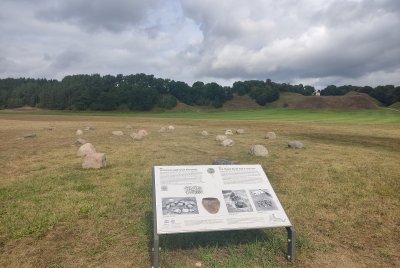
My first review here.I took a minibus at 8.30 from Vilnius' bus station and about 50-55 min later I was in Kernave.I tried to get a coffee, a freshly made one,but in vain. One fellow passenger, who turned out to be responsible for the museum's website and online stuff,explained me what to see in Kernave. I then talked to an elderly man in russian. He turned out to be armenian and advised me to walk 10 minutes to a frenchman's house who seems to sell camping equipment. I did so,but I only encountered two sleepy dogs and no frenchman. The two cafes there are only open from friday till sunday. The high season seemed to be over. I was there in Sept.2022.
Well, first I visited the museum which turned out to be quite interesting with its countless well-done short vidio clips.I then visited all five hills and the wooden settlement on the castle hill. Then I walked down to the river,had a break and picnic there and went back to the museum where I met that fellow passenger again. He advised to me to go to a gallery whose owner also sells snacks and cafe. I did so,had a decent coffee and enjoyed the gallery's weird and funny garden.
I took the bus at 14.15 back to Vilnius..............suprise,suprise,my fellow passenger from the morning also took the same bus which was a bigger and more confortable one than the marschrutka/minibus in the morning.
I had a very …
Keep reading 0 comments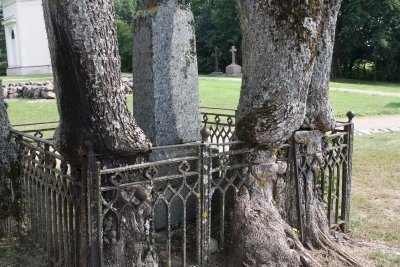
August 2017 - again a rather historic site with gras on top. We wandered around the hills a bit, visited the wooden church and looked at the scenary. Nothing out of the ordinary, however of national importance. From Kernave it was not much further to Vilnius.
Unfortunately we forgot about the Struve Arc Point not far from here. Nice green for the morning.
Keep reading 0 comments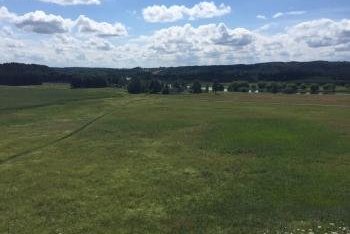
Visited this site in August 2017. A visual representation of site is a little bit strange: five hills and green valley from the hills to the river. When walking around the hills it is quite difficult to imagine how the constructions were located; however in the museum there is visual demonstration of the place during prosperity times. But still it looks like that the hills’ surface is too small to accommodate anything larger than one house circled by a wall (and I can image how it was painful to carry water, food and everything all the time up the hill).
Unfortunately, there are no visible remains of the human settlement on the site, but the overall setting and views are very beautiful. Not surprisingly, the area was inhabited for over 11,000 years and this one of the important site values. It is advisable to visit small museum as well to see some additional information and displays (as coin collector I like the coin with the knight most).
Keep reading 0 comments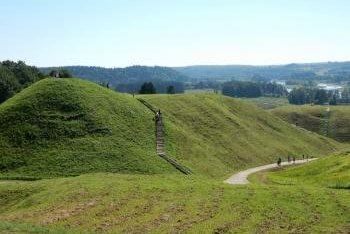
Everything that can be said about Kernave has already been mentioned on this site - it is a reasonably interesting site that makes for a nice excursion from Vilnius and has a modern, well-presented museum next to it. You can easily imagine the forts on top of the huge mounds and the location of the village by the river below. I'm glad I went there as part of our guided trip, as it seems a bit difficult to reach by public transport.
Keep reading 0 comments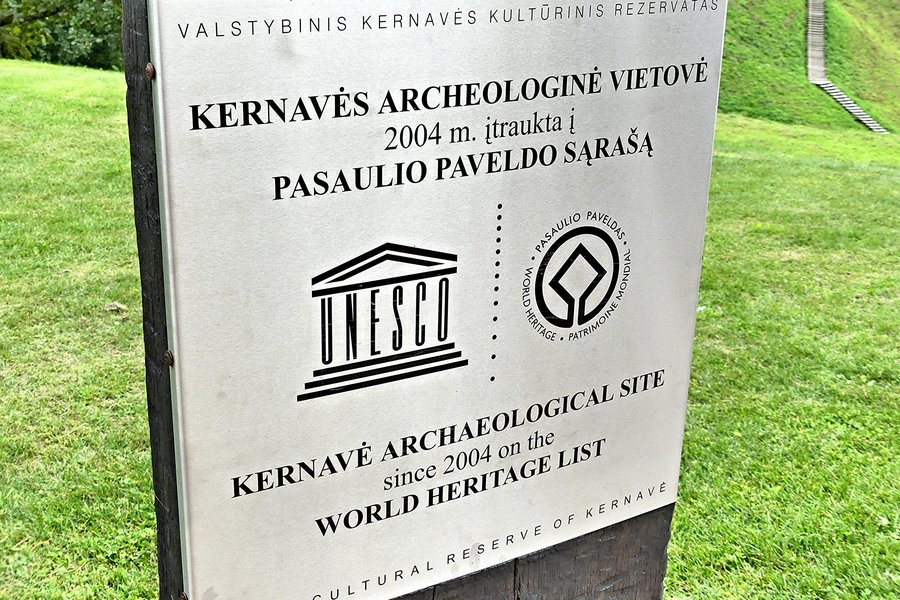
I visited this WHS in August 2016. It's an interesting side trip from Vilnius and can easily be combined with the Struve Geodetic Point of Meskonys. In both cases don't expect to see much. Further reading and using your imagination will be required and even by doing so, most probably these WHS will not rank high on anybody's list. Alas, visiting by car (with a GPS) is quite straightforward and the Kernave Archaeological Site is open and free to visit all year round. The small nearby Kernave Archeological Museum is always closed on Mondays and in July and August is also closed on Tuesdays. Entrance to the museum costs 2 euros and worth visiting to see some of the remains found here as well as some informative videos on the different settlements from Stone Age, Bronze Age, Iron Age, Roman period to the Middle Ages. Lithuania is a country full of hill forts (around 1000) and the 5 hill forts of Kernave are the highlight of the archaeological site. All you'll see (and climb if you want) are 5 mounds with wooden stairs leading to the top. Don't expect to see any wooden forts as they have rotten away quite a long time ago. They are believed to be natural hills which have been adjusted for defensive purposes and they were the main type of ancient settlement since the end of the Bronze Age up to the 14th century. The oldest is the central one known as Altar/Aukuras Hill Fort …
Keep reading 0 comments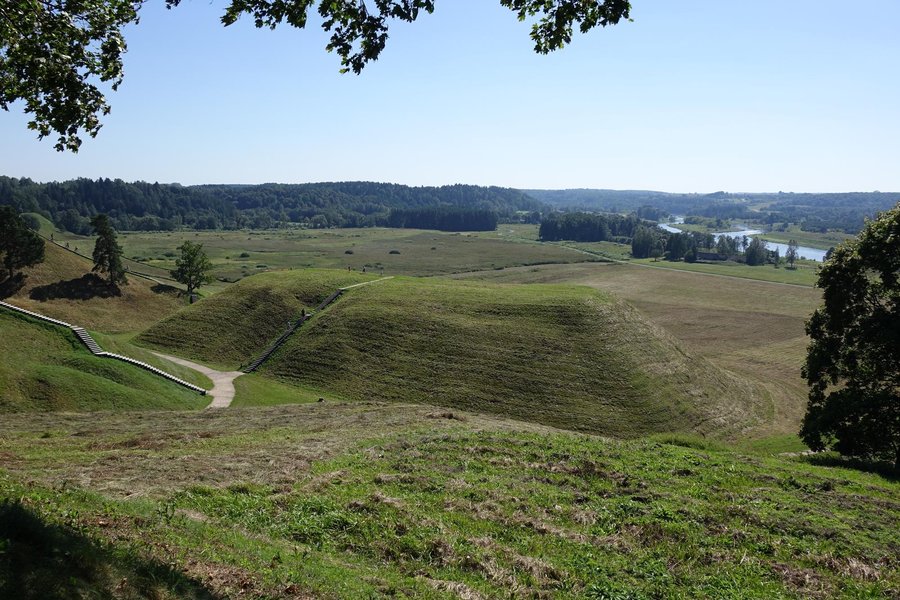
The WH meeting in and around Vilnius provided me with a good opportunity to review some WHS in this corner of the world. The Kernavė Archaeological Site was last reviewed 6 years ago, and – like the Curonian Spit – its distinguishing features have always been a bit of a mystery to me. It is also the least visited site in Lithuania among our subscribed travellers. However, it lies only 45 km from the capital and is open 5 days a week without any restrictions.
It is a largely unexcavated archaeological site, harbouring the remains of a settlement and five hill forts dating from the 12th to 14th century. Kernave slowly had grown into a permanent town at this strategic location near the Neris River from the 1st century on. Its OUV lies mainly in the construction of these hill-forts, as well as the mixture of pre-Christian and Christian traditions (shown for example, in the burial rites). The Lithuanians were very late to embrace Christianity: the official year is 1387, ending the existence of the last pagan nation in Europe.
Since 2012, the interpretation of this WHS has greatly improved due to the commissioning of a new on-site museum. The exhibition lies mostly underground, and lighting is kept to a bare minimum. This benefits the many audiovisual features. During summer, events of Experimental Archaeology are often held at the site and they’ve used recordings of these to explain the use of findings that are displayed in adjacent showcases. As many …
Keep reading 0 comments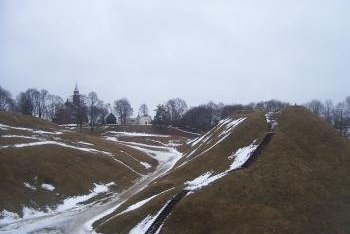
I spent a pretty bleak morning at Kernave in February 2010. The site itself was fairly interesting and larger than I thought it would be. The main point of interest are the 5 Hills that once housed forts but now just feature a set of steps to give a view over the surrounding area.
The plain between the hills and the river is also included in the inscription; it was here that the lower towns were originally constructed. There are archaeological findings here dating back 10 millennia, including sacrificial sites in the small forest. I trekked across this area to get a good view of the Hill forts. There are no actual remains to be seen at this site so don't expect any grand ruins, but It was interesting to see how the area was consistently inhabited.
The highlight for me was climbing up the Hill forts. There are no hand rails which would normally be fine but there was a fair bit of snow and ice on them when I visited so made for a somewhat precarious climb, this did make the view from the top even more rewarding though. My visit coincided with a relative thaw in temperatures (it was about 2°C but felt much colder on top of the windy hills) and as such there were streams of meltwater running along almost every path, making for some very soggy and perilous walks.
A real word of warning though for visitors, especially in winter. The Bus connections from …
Keep reading 0 comments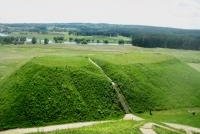
Some 60 km north-west of Vilnius, the archaeological site of Kernave is likely not to be on top of your list of places to visit in Lithuania. And it could probably remain there, unless you are heavily into archaeology - then Kernave is an absolute must.
Kernave had existed since the age of Lithuanian dawn but was completely destroyed by the Teutonic order in the 14th century. So what we can see today is only a number of large mounds - still unexcavated - where underneath lies the remains of hill forts, settlements and numerous burial sites.
My own visit was a fairly short one though I got a thorough explanation of its importance from my guide. But my personal memory of Kernave will always be when climbing the top of one of the mounds, looking out over a stunningly beautiful landscape bathing in sunlight. From its forested hills down to the river in the valley made you realise that whoever choose this location thousands of years ago realised both the strategic as well as the esthetical value of Kernave.
Keep reading 0 comments
